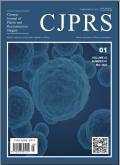Bibliometric analysis of ChatGPT and plastic surgery research: Insights from diverse search strategies and co-word analysis
Chinese Journal of Plastic and Reconstructive Surgery
Pub Date : 2024-12-01
DOI:10.1016/j.cjprs.2024.10.002
引用次数: 0
Abstract
Background
The rise of artificial intelligence in healthcare, particularly the development of large language models like ChatGPT, has opened new avenues for innovation in medical fields, including plastic surgery. ChatGPT offers potential applications in patient education, surgical planning, and decision-making support, making it an important research subject. However, there has been limited investigation into its impact on plastic surgery. The objective of this study was to investigate the progress of research on ChatGPT and plastic surgery, focusing on key contributors and emerging topics within the field.
Methods
Five distinct search strategies were employed to analyze relevant publications from the Scopus database.
Results
The analysis identified and presented the top authors, universities, countries, sponsors, and journals (within each search strategy). The co-authorship networks of authors, universities, and countries are graphically presented. The authors’ performance was depicted by various indicators, such as total publications, citations, h-index, g-index, and m-index. A co-word analysis revealed the focus of the papers, which were presented in 15 groups. This multifaceted approach provides a detailed understanding of key themes in the field.
Conclusion
This report offers a comprehensive overview of the current state of research at the intersection of ChatGPT and plastic surgery.
ChatGPT和整形外科研究的文献计量分析:来自不同搜索策略和共词分析的见解
人工智能在医疗保健领域的兴起,特别是ChatGPT等大型语言模型的发展,为包括整形外科在内的医疗领域的创新开辟了新的途径。ChatGPT在患者教育、手术计划和决策支持方面具有潜在的应用前景,是一个重要的研究课题。然而,关于其对整形手术影响的调查有限。本研究的目的是调查ChatGPT和整形外科的研究进展,重点关注该领域的关键贡献者和新兴主题。方法采用5种不同的检索策略对Scopus数据库中的相关文献进行分析。分析确定并展示了顶级作者、大学、国家、赞助商和期刊(在每个搜索策略中)。作者、大学和国家的合著者网络以图形形式呈现。作者的表现通过各种指标来描述,如总发表量、引用量、h指数、g指数和m指数。共词分析揭示了论文的重点,这些论文分为15组。这种多方面的方法提供了对该领域关键主题的详细理解。本报告对ChatGPT与整形外科交叉的研究现状进行了全面概述。
本文章由计算机程序翻译,如有差异,请以英文原文为准。
求助全文
约1分钟内获得全文
求助全文
来源期刊

Chinese Journal of Plastic and Reconstructive Surgery
Surgery, Otorhinolaryngology and Facial Plastic Surgery, Pathology and Medical Technology, Transplantation
CiteScore
0.40
自引率
0.00%
发文量
115
审稿时长
55 days
 求助内容:
求助内容: 应助结果提醒方式:
应助结果提醒方式:


